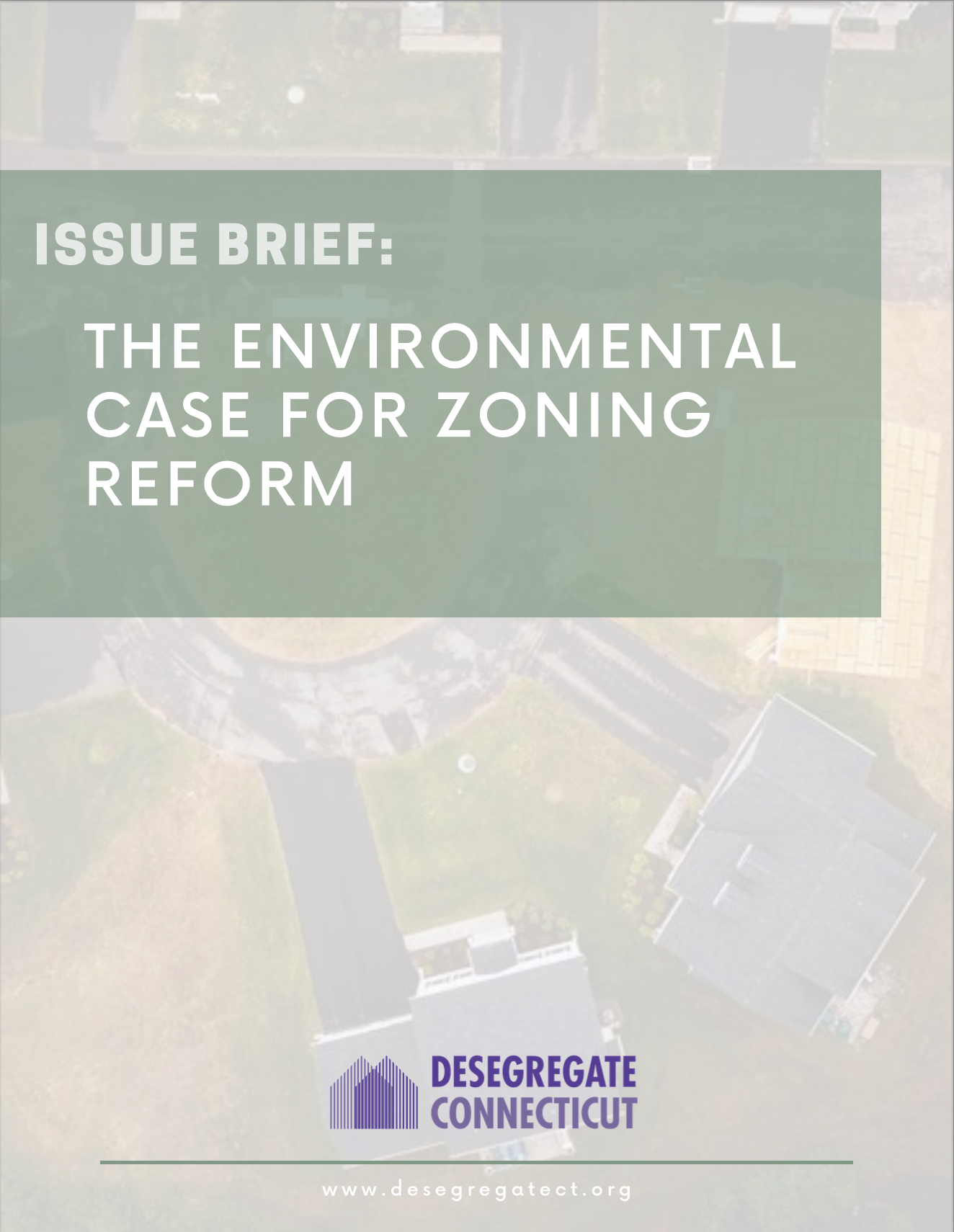Issue Brief: The Environmental Case for Zoning Reform
Connecticut’s environment is one of the state’s most treasured resources. Our leaders, on a bipartisan basis, have recognized the need for bold action to protect our environment. Together, we have set ambitious goals and worked for change.
Despite this consensus, we haven't acted. Connecticut has largely neglected a primary cause of environmental harm in the state: its zoning laws. These rules have the potential to promote sustainability by channeling development to smart areas and safeguarding natural resources.
Our current zoning is unsustainable. It prevents denser development in existing residential areas and near transit, increasing growth pressures in unsustainable areas. This issue brief lays out the environmental case for zoning reform in Connecticut.
This brief proceeds in 3 parts. Part II leverages data from the Connecticut Zoning Atlas to show how zoning-enforced sprawl predominates across the state. Part III outlines six key environmental impacts of sprawl. And Part IV highlights the path to pro-environment zoning.
We must get smarter about land use. Achieving Connecticut’s climate and environmental goals is impossible without rethinking our backwards approach to land use. With statewide reforms that direct new growth to specific places, Connecticut can make significant progress – but it hasn’t a moment to lose.

